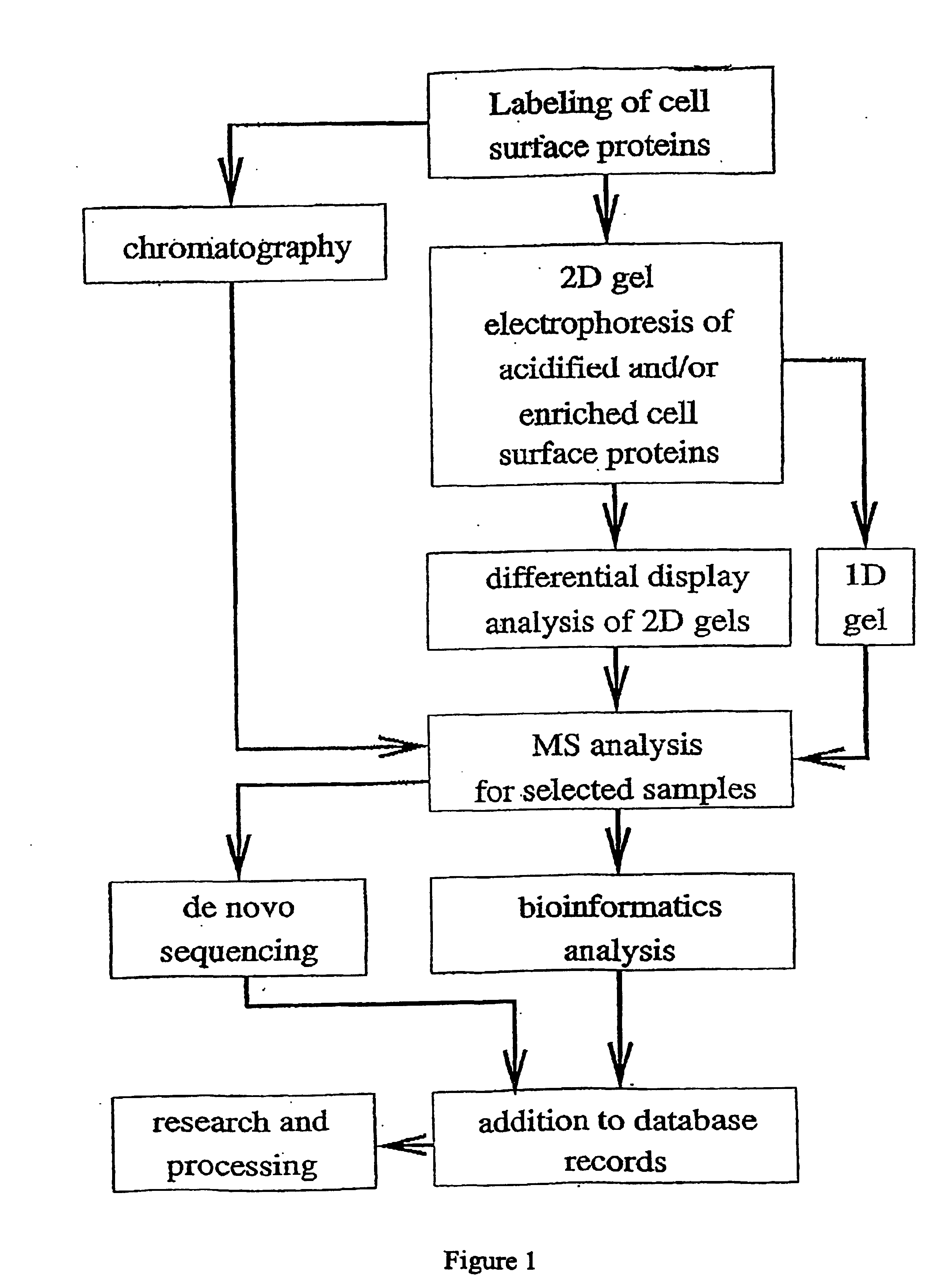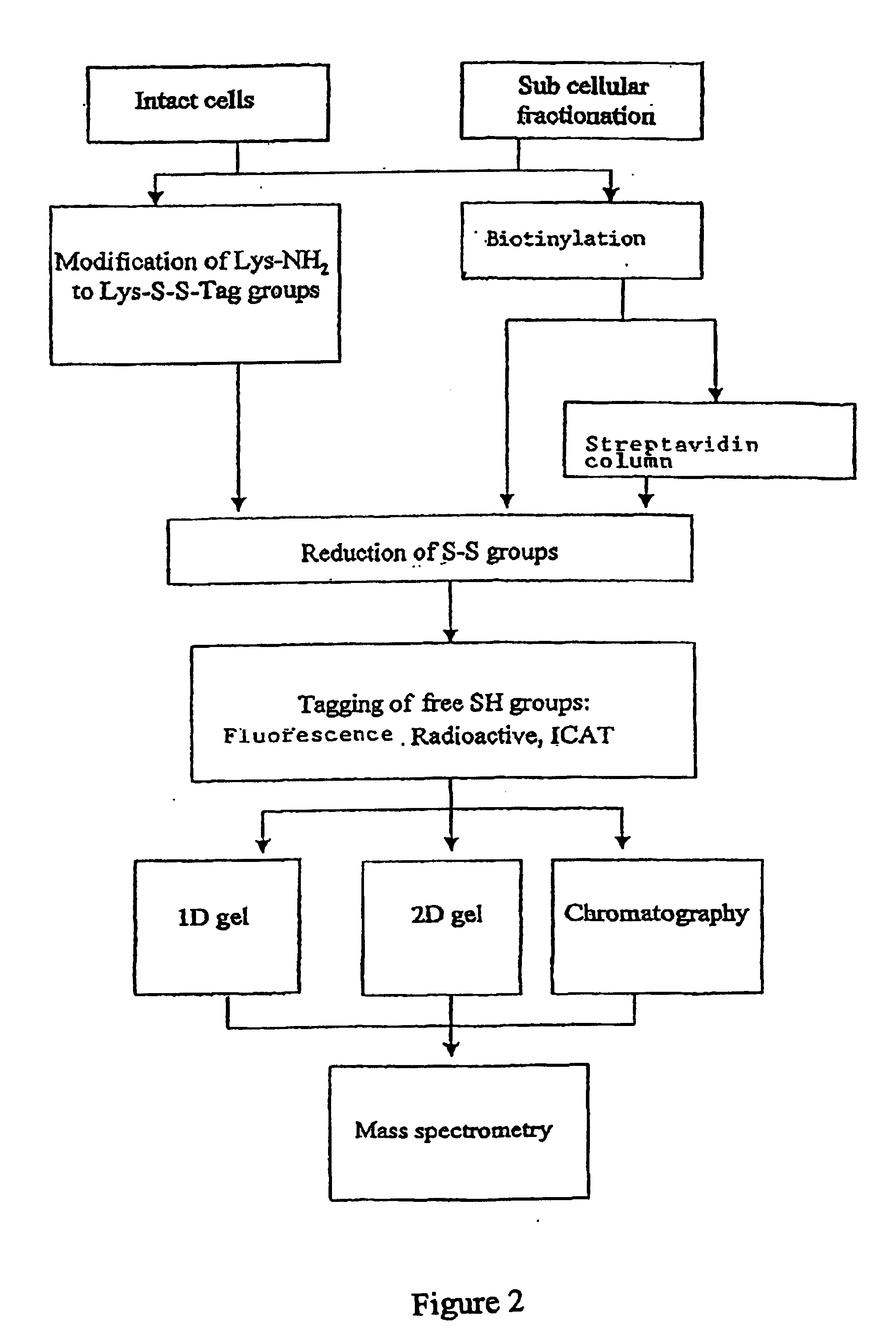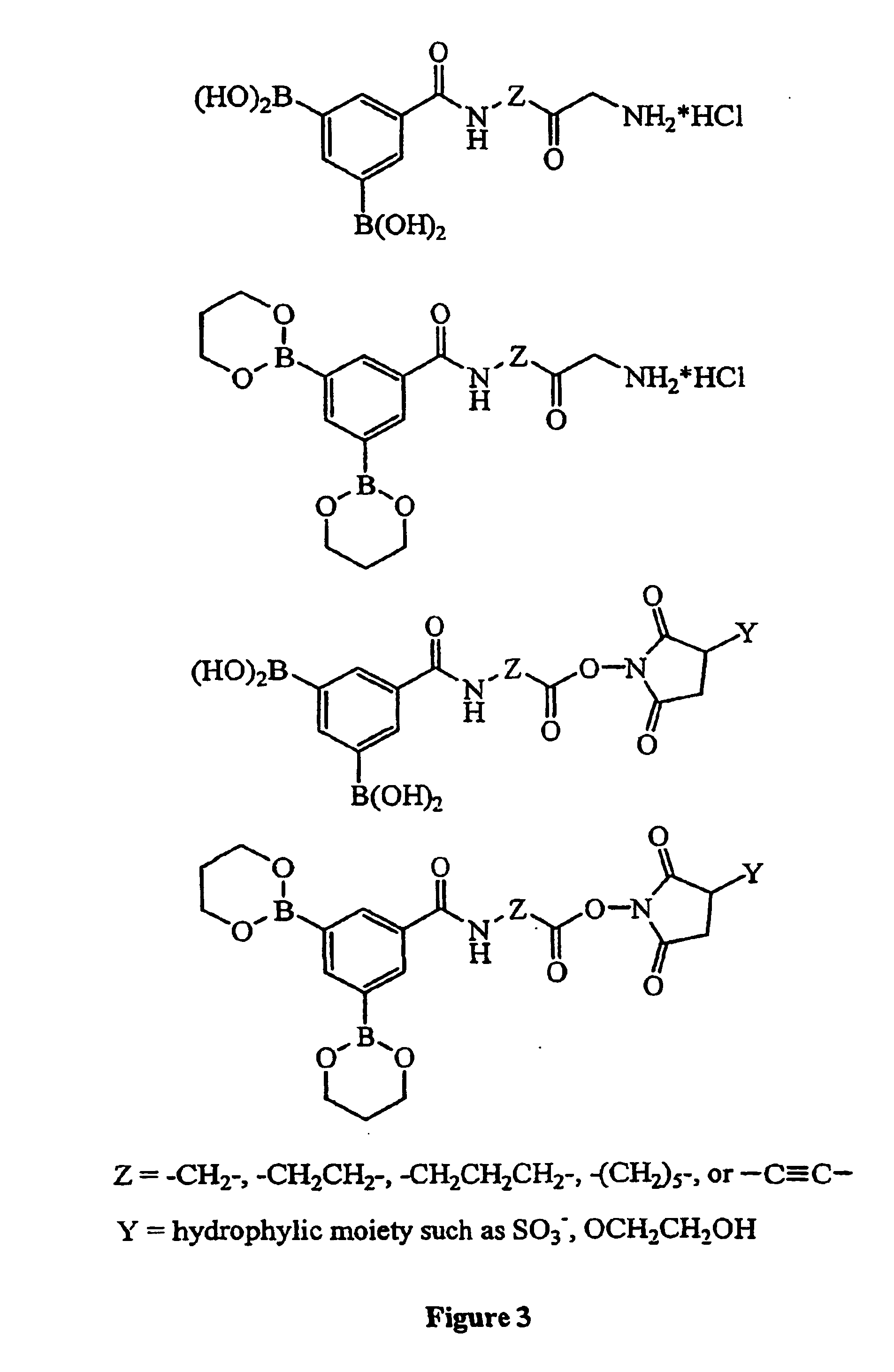Methods and compositions related to tagging of membrane surface proteins
- Summary
- Abstract
- Description
- Claims
- Application Information
AI Technical Summary
Benefits of technology
Problems solved by technology
Method used
Image
Examples
example 1
Tagging of Cell Surface Proteins in Live Cells with EZ-LINK NHA-SS-Biotin
[0204] One set of HeLa cells is labeled with cleavable biotin, and a second with DMSO as control. [0205] 1. Wash cells three times with cold PBS. [0206] 2. Detach cells from 4 roller bottles with 50 ml PBS / 5 mM EDTA (prepared at room temperature) for 15 minutes at the incubator, while rolling. Place in a 50 ml tubes and pellet cells at 1800 rpm, 4° C. for 5 minutes. Count cells. [0207] 3. Resuspend cells from all tubes in 50 ml PBS / CM and spin down at 1800 rpm, 4° C. for 10 minutes. [0208] 4. Resuspend the cells at 25×106 cells / ml in PBS / CM containing 0.5 mg / ml sulfo-biotin-NHS. Place cells in a 5 ml snap cup tube and cover with aluminum foil. [0209] 5. Incubate with gentle shaking, in the cold cabinet, for 20 minutes. Spin down cells, 1500 rpm, 4° C. for 5 minutes. Resuspend at 25×106 cells / ml in 0.5 mg / ml PBS / CM containing 0.5 mg / ml sulfo-biotin-NHS. Incubate as before for 20 more minutes. [0210] 6. Transfer...
example 2
Tagging of Cell Surface Proteins in Live Cell with Alexa Fluor®488-NHS
[0221] There are several products of Alexa Fluor, each has a different emission maximum. Thus, cells can be treated differently and labeled with different emitting Alexa Fluor reagents. The detection can be done with two lasers, one that will detect one fluorophore and the other the second. An image can then be generated and the proteins that are found in both samples will give a different color then each flourphore alone.
[0222] One set of HeLa cells is labeled with Alexa Fluor®488-NHS, and a second with DMSO as control. All steps are performed on ice to prevent internalization of cell surface proteins. [0223] 1. Wash cells three times with cold PBS. [0224] 2. Detach cells from 4 roller bottles with 50 ml PBS / 5 mM EDTA (prepared at room temperature) for 15 minutes at the incubator, while rolling. Place in a 50 ml tubes and pellet cells at 1800 rpm, 4° C. for 5 minutes. Count cells. [0225] 3. Resuspend cells from...
example 3
Cell Surface Protein Profiling Methodologies
[0237] The flow chart in FIG. 1 exemplifies several possible combinations of cell surface protein labeling and identification techniques. A summary of certain aspects of the illustrated methods is set forth below.
[0238] These exemplary methods begin with a selective labeling of cell surface proteins. The labeling method, when performed using a labeling agent that binds to lysine residues, acidifies proteins, making isoelectric focusing (and thereby 2D gel electrophoresis) possible for highly basic proteins. The labeled proteins are ultimately identified by mass spectrometry analysis. Resolution of proteins for mass spectrometry may be accomplished by chromatographic separations, 2D gel electrophoresis or 1D gel electrophoresis. 2D gel electrophoresis may also be used as a part of differential display method for identifying those proteins whose expression levels change in different conditions.
[0239] MS analysis provides a wealth of infor...
PUM
| Property | Measurement | Unit |
|---|---|---|
| Composition | aaaaa | aaaaa |
| Structure | aaaaa | aaaaa |
| Surface | aaaaa | aaaaa |
Abstract
Description
Claims
Application Information
 Login to View More
Login to View More - R&D
- Intellectual Property
- Life Sciences
- Materials
- Tech Scout
- Unparalleled Data Quality
- Higher Quality Content
- 60% Fewer Hallucinations
Browse by: Latest US Patents, China's latest patents, Technical Efficacy Thesaurus, Application Domain, Technology Topic, Popular Technical Reports.
© 2025 PatSnap. All rights reserved.Legal|Privacy policy|Modern Slavery Act Transparency Statement|Sitemap|About US| Contact US: help@patsnap.com



